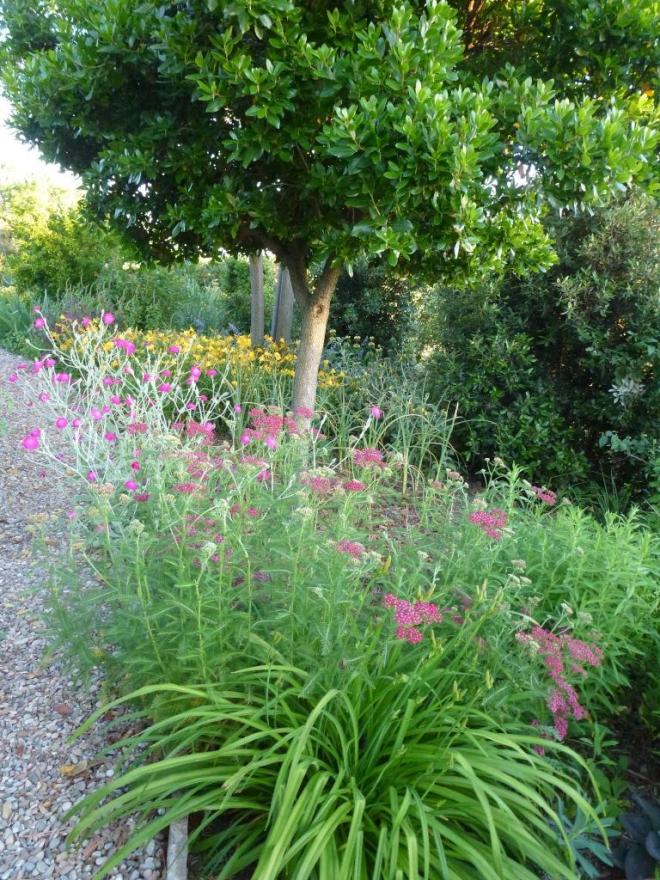Eschscholzia californica Thai Silk Series
While I love the usual bright orange Eschscholzia, it is not a colour I want to predominate all over the garden; on the slope it is perfect.

Some very good American friends brought me some packets of seed of the Thai Silk series; I’m not sure why but I thought they might not be as strong a plant, or as easy to cultivate as the more customary wild orange variety.
From the RHS:
Preferred common name: California poppy Thai Silk Series
Family: Papaveraceae
Eschscholzia can be annuals or perennials, with finely divided leaves and solitary, long-stalked, poppy-like yellow, orange or red flowers, followed by conspicuous long seed-pods
Thai Silk Series are annuals with attractively dissected, blue-green foliage and single or more often semi-double flowers 4-6cm wide, in a range of shades of cream, yellow, orange, pink and red, sometimes with a cream centre.
Cultivation: Will thrive in poor, well-drained soil but they need full sun for the flowers to open. Can be grown as a drought-tolerant container plant. Good for exposed or coastal areas
They began flowering in the middle of April and made some nice combinations with tulips, especially in the Large Island.

Eschscholzia californica Thai Silk Series with tulips in the Large Island

Eschscholzia californica Thai Silk Series

Eschscholzia californica Thai Silk Series with tulips in the Large Island
I am removing the orange and yellow flowered plants from the Large Island and hoping that it will be all shades of pink, white, cream and pale yellow in the autumn.
Here’s a selection of some of the beautiful colours. I really like the pleated texture that some of them display.

Eschscholzia californica Thai Silk Series with tulips in the Large Island

Eschscholzia californica Thai Silk Series – how about this for pleated petals?

Eschscholzia californica Thai Silk Series

Eschscholzia californica Thai Silk Series

Eschscholzia californica Thai Silk Series with silver leaved Tanecetum

Eschscholzia californica Thai Silk Series

Eschscholzia californica Thai Silk Series

Eschscholzia californica Thai Silk Series

Eschscholzia californica Thai Silk Series

Eschscholzia californica Thai Silk Series, they come as doubles too
They are making seed pods now but are continuing to flower. I will cut them down when they have finished flowering but after they’ve spread their seed. Last year they flowered again as soon as the first rain of late summer arrived. At present they are filling so many spaces that it is hard to imagine the garden without them.

























